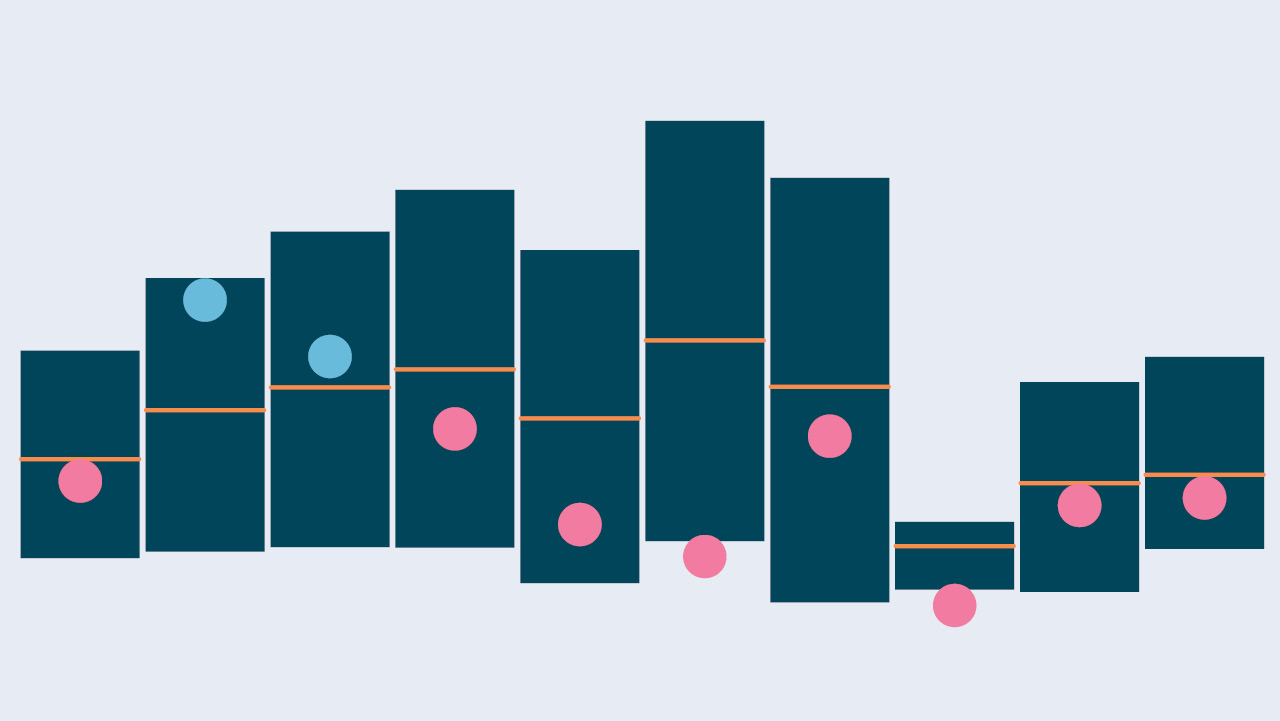The approach of the end of the year means end-of-year tax planning, which for many includes finalizing annual charitable contributions. This presents an opportunity for nonprofits to engage donors and help them complete their gifts by December 31.
Here are some reminders and tips for nonprofits to enhance donor stewardship and fundraising efforts at year end.
Both cash and appreciated securities should be considered for gifts.
For those who are itemizing charitable deductions, cash gifts to public charities or charitable vehicles such as donor advised funds (DAFs), charitable gift annuities and certain types of private foundations can be deducted up to 60% of Adjusted Gross Income (AGI). Gifts of marketable securities can be deducted up to 30% of AGI, as determined by the fair market value of the securities when donated. Though the maximum deduction is lower, donors can avoid the 20% long-term capital gains tax and the 3.8% net investment income tax (NIIT) if applicable.
To-Do: Plan to connect with consistent annual donors who have not yet made their gift.
Qualified Charitable Distributions (QCDs) can be used to meet Required Minimum Distributions (RMDs).
Donors who are at least 70½ in 2023 can make a qualified charitable distribution of up to $100,000 from their IRA to a qualified charity to satisfy the requirement.
The four requirements for a QCD are:
1. Donor must be at least 70½ years of age at the time the QCD is made.
2. The QCD must come from a Traditional or Inherited IRA.
3. The distribution must go directly from the IRA to a qualified 501(c)(3) charity.
4. The receiving charity must provide a letter stating no goods or services were received in exchange for the contribution.
To count towards the RMD, the funds must be distributed out of the IRA by the donor’s RMD deadline which is typically December 31.
To-Do: Check against your donor database for donors who meet the age criteria for a QCD or who previously made a QCD. Schedule outreach to remind them of this option.
Beginning in 2023, Qualified Charitable Distributions (QCDs) can be used to fund a life income gift (charitable remainder trust or charitable gift annuity).
Donors who are at least 70½ can make a one-time qualified charitable distribution up to $50,000 from an IRA to fund a life income gift. Life Income QCDs have the following requirements:
1. Donor must be 70½ at the time of the QCD
2. QCD must come from a Traditional or Inherited IRA
3. Life Income QCD can only be used in one tax year during donor's lifetime
4. QCD must fund a charitable trust or charitable gift annuity at a qualified 501(c)(3) charity
5. Income beneficiary limited to donor and/or spouse only, special rules apply if a spouse does not meet age requirements
6. Up to $50,000 in total for one or more gifts, gifts can be split between different charities
To count towards the RMD, the funds must be distributed out of the IRA by the donor's RMD deadline which is typically December 31. Additionally, the donor’s IRA must be subject to RMD requirements which begin at age 73.
To-Do: Remind donors who meet the age requirements or those who previously made outright gifts via a QCD that a Life Income QCD is an option.
Grants from DAFs can present opportunities for stewardship – and other gifts.
Many donors will make last-minute gifts to DAFs at year’s end, an easy way to maximize their charitable deductions for the year. One reason a donor may choose to make gifts using a DAF is the ability to make them anonymously. However, as a result, many nonprofits receiving grants from DAFs are unaware of the underlying donor’s identity.
This can be an issue for some donors, particularly if they welcome acknowledgment from the organizations whose causes they support through their DAF, and especially if the acknowledgment speaks to the impact of their gift. Much like bequests, encouraging donors to identify themselves when making a grant recommendation creates an opportunity to deepen the donor’s connection to your organization, which can lead to conversations about ways to enhance their support.
To-do: Update communications and templates to create reminders and forms for notifications of DAF grant recommendations, similar to those for notifications of inclusion of your organization in their will. Encourage donors with an existing DAF to name your organization as a charitable successor beneficiary.
Additions to charitable remainder unitrusts (CRUTs) are as easy as an outright gift.
Donors can make an addition of cash or appreciated securities to an existing CRUT in a similar fashion to making an outright gift to charity. There is no additional trust documentation required, and the donor can simply direct the additional assets to the trust after obtaining the appropriate transfer instructions. Donors can claim a charitable deduction depending on the asset transferred and will also receive a prorated distribution from the trust based on the increased market value and the number of days between the date of the gift and the end of the year. The additional gift will also be included in the valuation of the trust as of the next valuation date, which could lead to an increased unitrust distribution amount to trust beneficiaries.
Beneficiaries can also choose to use their year-end distribution from a charitable trust to make a gift to charity or make an addition to the CRUT of the trust’s distribution, often with minimal administrative effort.
To-do: Connect with trust donors who give regularly or who have sizable trust distributions and offer this convenient option to support a program or focus-area they care about.
Year-end charitable giving may require early action.
For charitable contributions to be tax deductible for the year, contributions must be made by December 31. To avoid missing that deadline, donors should plan to initiate their gifts by December 1, allowing enough time for administrative and operational processes, particularly when transferring non-cash assets including securities.
Here are a few reminders:
• The date of the donation is recorded as the date the money is received via wire or the postmark date on a mailed check.
• Contributions made by credit card will be recorded in the tax year the charge is made, not the year the charge is paid.
• Depending on the type of asset, transfers of securities can take three to four weeks for completion. The type of asset also determines the gift date.
• December 1 is the recommended date to initiate gifts of securities, wire transfers or QCDs.
To-do: To avoid last minute emergencies due to vacation or holiday schedules, update asset delivery instructions and timelines. Circulate to all internal stakeholders who may have donor contact.
Click here to download a PDF of this article.
This material is provided for illustrative/educational purposes only. This material is not intended to constitute legal, tax, investment or financial advice. Effort has been
made to ensure that the material presented herein is accurate at the time of publication. However, this material is not intended to be a full and exhaustive explanation of
the law in any area or of all of the tax, investment or financial options available. The information discussed herein may not be applicable to or appropriate for every investor
and should be used only after consultation with professionals who have reviewed your specific situation.
The Bank of New York Mellon, DIFC Branch (the “Authorized Firm”) is communicating these materials on behalf of The Bank of New York Mellon. The Bank of New York Mellon
is a wholly owned subsidiary of The Bank of New York Mellon Corporation. This material is intended for Professional Clients only and no other person should act upon it.
The Authorized Firm is regulated by the Dubai Financial Services Authority and is located at Dubai International Financial Centre, The Exchange Building 5 North, Level 6,
Room 601, P.O. Box 506723, Dubai, UAE. The Bank of New York Mellon is supervised and regulated by the New York State Department of Financial Services and the Federal
Reserve and authorized by the Prudential Regulation Authority. The Bank of New York Mellon London Branch is subject to regulation by the Financial Conduct Authority and
limited regulation by the Prudential Regulation Authority. Details about the extent of our regulation by the Prudential Regulation Authority are available from us on request.
The Bank of New York Mellon is incorporated with limited liability in the State of New York, USA. Head Office: 240 Greenwich Street, New York, NY, 10286, USA. In the U.K. a
number of the services associated with BNY Mellon Wealth Management’s Family Office Services– International are provided through The Bank of New York Mellon, London
Branch, One Canada Square, London, E14 5AL. The London Branch is registered in England and Wales with FC No. 005522 and BR000818. Investment management services
are offered through BNY Mellon Investment Management EMEA Limited, BNY Mellon Centre, One Canada Square, London E14 5AL, which is registered in England No.
1118580 and is authorized and regulated by the Financial Conduct Authority. Offshore trust and administration services are through BNY Mellon Trust Company (Cayman)
Ltd. This document is issued in the U.K. by The Bank of New York Mellon. In the United States the information provided within this document is for use by professional
investors. This material is a financial promotion in the UK and EMEA. This material, and the statements contained herein, are not an offer or solicitation to buy or sell any
products (including financial products) or services or to participate in any particular strategy mentioned and should not be construed as such. BNY Mellon Fund Services
(Ireland) Limited is regulated by the Central Bank of Ireland BNY Mellon Investment Servicing (International) Limited is regulated by the Central Bank of Ireland. Trademarks
and logos belong to their respective owners.
BNY Mellon Wealth Management conducts business through various operating subsidiaries of The Bank of New York Mellon Corporation.
© 2023 The Bank of New York Mellon Corporation. All rights reserved. | WM-434350-2023-10-06



